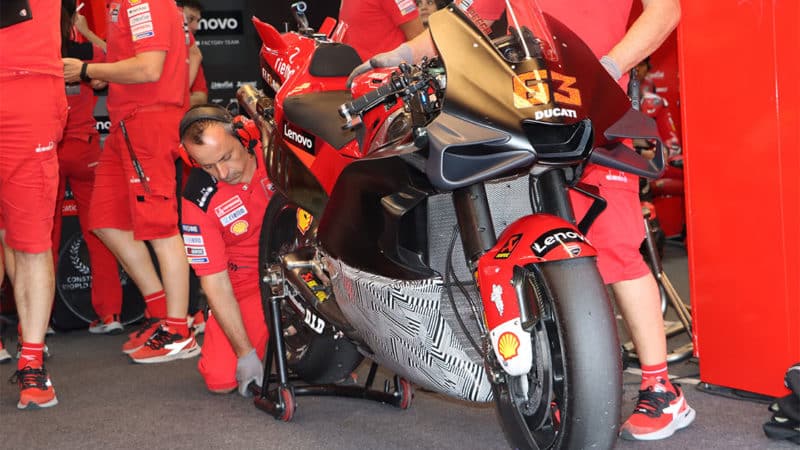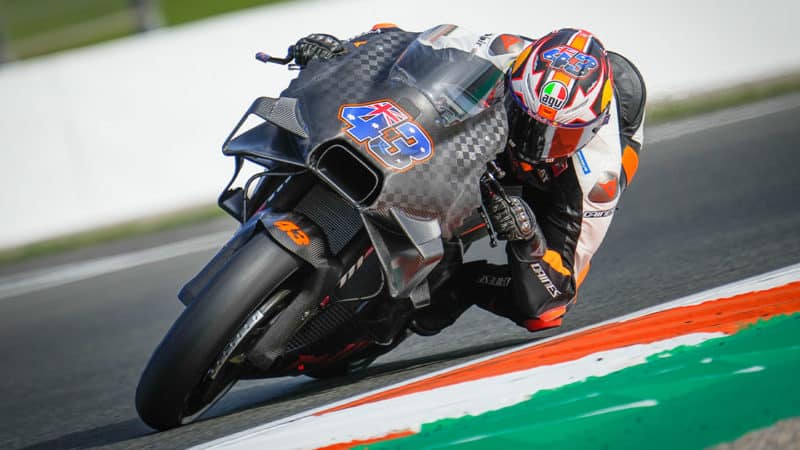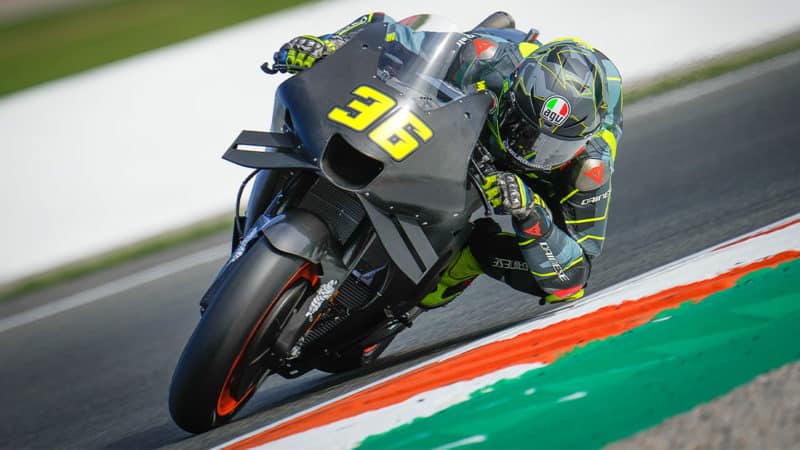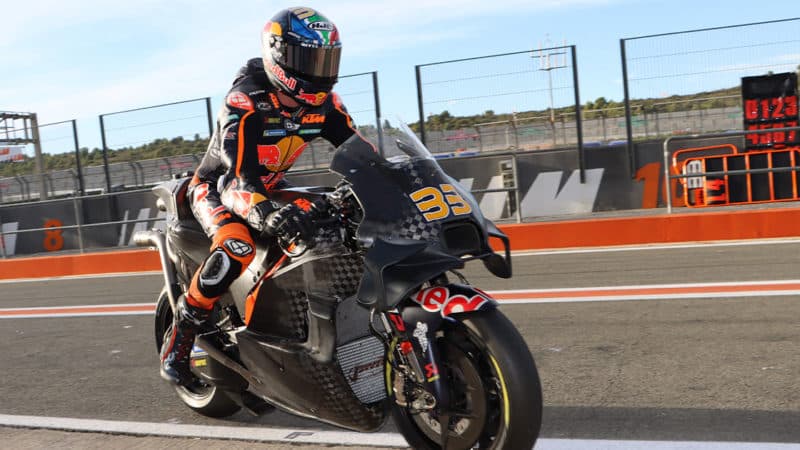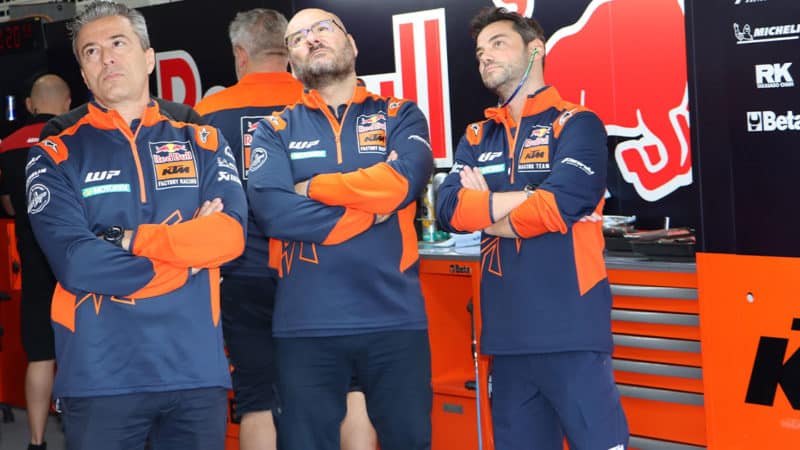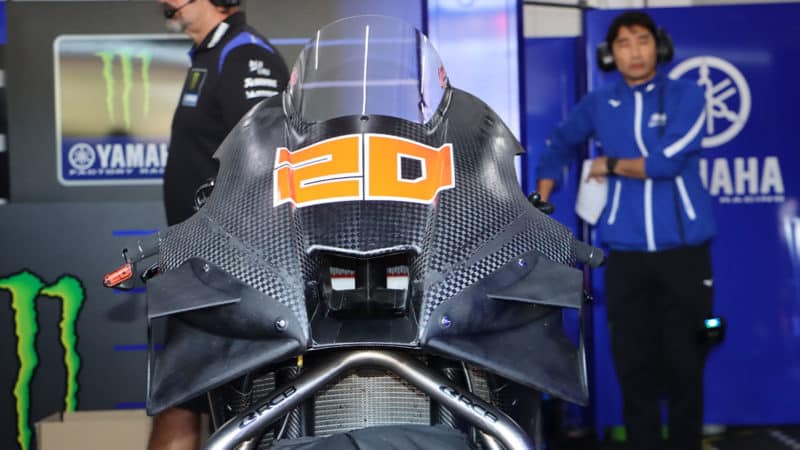All the bikes are literally within 1% of each other on performance, so it’s just tweak, tweak, tweak.
Listen to KTM hero Brad Binder, who tried lots of different parts and settings on Tuesday, but most of the changes were so tiny that he could barely tell the difference. Because that’s how it is when the engineers are chasing hundredths rather than tenths.
“It’s hard to say, because when you change aero stuff, you change everything [geometry etc], so you don’t know what does what,” said the South African, who evaluated all kinds of changes to the RC16. “I tried everything as a package [KTM’s new modular approach], so what [each change] was doing I have no idea, that’s the engineers’ job – they’ve got to optimise everything and bring us a better bike at Sepang.
“They tell me nothing. I get on the bike, I ride it and I tell them what I think, but I don’t know what’s what. I think they get more unfiltered information that way, so it’s probably better in the long run.”
Thus MotoGP is becoming more like car racing – the only way forward is for the data engineers to dig deep into the zeroes and ones to find out what gives a hundredth here and a thousandth there. And then apply those changes for February’s Sepang tests.
Lap times at a one-day test are largely irrelevant, but there were a few noteworthy performances. VR46 Ducati rider Luca Marini was fastest – a great way to end his year and confirm his growing stature. Miguel Oliveira was the quickest rider making a bike swap, from KTM’s demanding RC16 to Aprilia’s sweeter RS-GP.
Jack Miller, Joan Mir and Alex Rins made the opposite journey, from the easy-riding Ducati and Suzuki to the harder-to-handle KTM and Honda. They ended the day 17th, 18th and 20th.
Aprilia
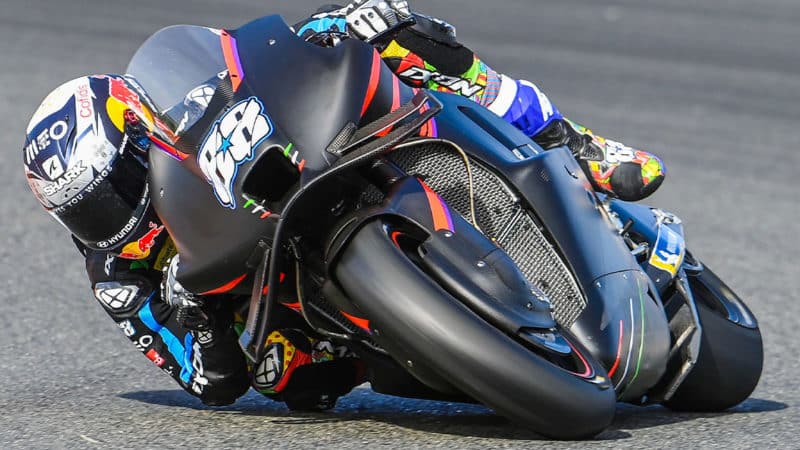
Miguel Oliveira was arguably the star of the show at the tests – fourth fastest on his first Aprilia ride, behind Luca Marini, Maverick Viñales and Marco Bezzecchi
Dorna
Aprilia arguably had the best day at the tests, taking three of the top five positions, thanks to KTM refugee and RNF arrival Miguel Oliveira, who was fourth, three-tenths off the best time, just behind Maverick Viñales and a fraction ahead of Aleix Espargaró, after just 75 laps aboard an RS-GP.
Oliveira is more of a thinker than a fighter, so he works better flowing with an RS-GP than taking the bull by the horns with an RC16. Don’t be surprised if the 27-year-old Portuguese starts beating Aprilia’s factory riders next year.
At some of last season’s races, Aprilia had the best bike on the grid – high performance plus a friendly character. The Noale factory’s challenge for 2023 is to make that happen more often, with more top-speed and better grip.
“We are looking for more pure power,” said factory number one Espargaró. “Plus more rear grip, so we can use more engine-braking into the corners and the same thing in acceleration, more grip.”
Aprilia’s other big challenge for 2022 (which shouldn’t be underestimated) is to upgrade its logistics to supply four riders instead of two, something it’s never done in the four-stroke MotoGP era.
Ducati
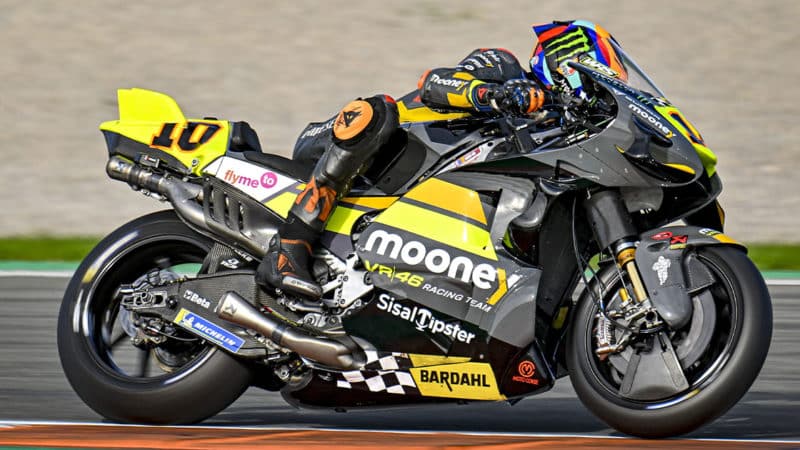
Marini will have a GP22 in 2023 but that could be an advantage, because he’ll have a fully developed bike
VR46
Ducati is in a strange, but luxurious, position. For the first time in its history the factory won the riders’/constructors’/teams’ MotoGP titles and took five of the top ten positions in the world championship. A remarkable performance, never mind the fact Ducati had eight on the grid.
So where do you advance from there? Carefully. Very carefully.
